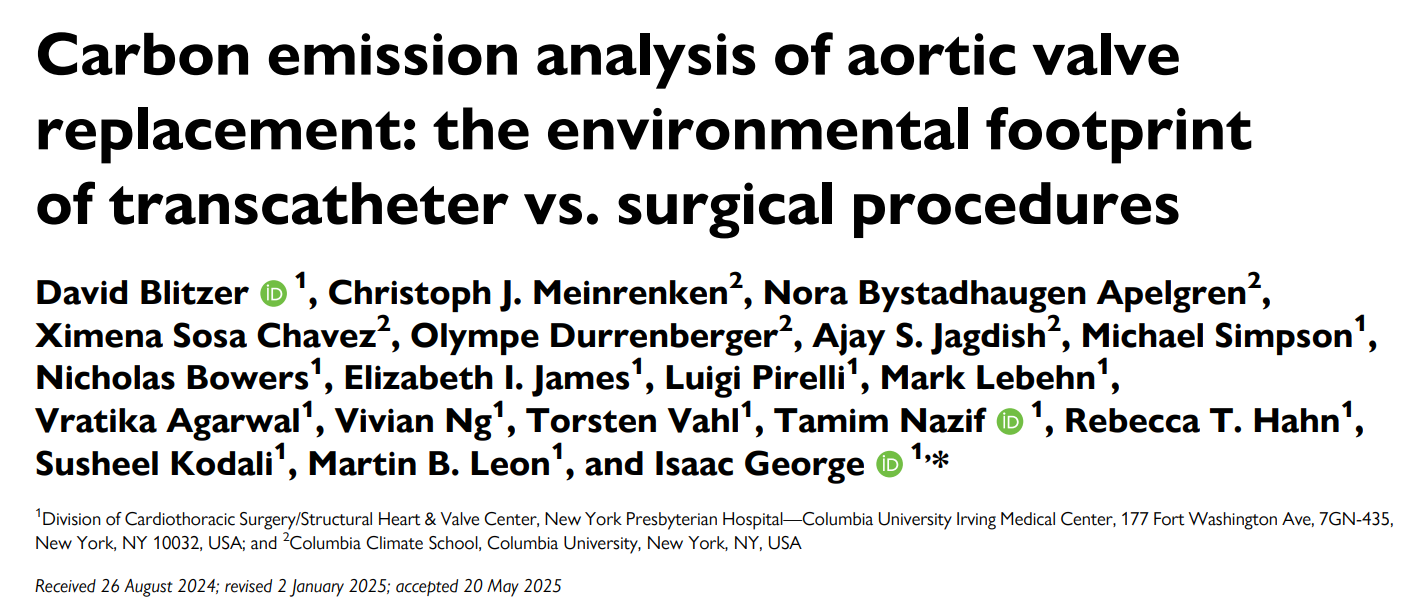Climate Stewardship is Fine But it Does Not Belong in Medical Decision Making
The Study of the Week startled me. The decision between TAVI and surgical aortic valve replacement is hard enough. Carbon footprints have no role.
We say that patients with thickened and restricted aortic valve leaflets have aortic stenosis. It’s a bad condition that, left untreated, is both deadly and miserable. A decade ago, the only treatment was surgical aortic valve replacement (SAVR).
But surgery is hard on patients. The surgeon enters the chest with a saw; the heart is placed on bypass and the new valve stitched into place. Healing occurs over months.
Modern technology has brought us transcatheter aortic valve implantation, or TAVI. It’s hard to believe but a surgeon or cardiologist can place a new aortic valve into the old valve via the leg artery. Healing takes place not over months but days.
At least 10 randomized trials have compared the two approaches. The results of these trials are incredibly nuanced. In the extremes, it is clear that TAVI is preferred for high-risk older patients, and surgical AVR is favored in young patients with low surgical risk, especially when other surgeries could add benefit, such as bypass or mitral valve repair.
The vast majority of patients with AS are in a gray area, and face a complex decision to have either the surgical or transcatheter approach. In recent years, the number of TAVI procedures have exceeded SAVRs, which is not surprising given the much easier recovery of the former.
The Shocking Paper and Idea
A group at Columbia University had the idea to add yet another data point in the complex TAVI vs SAVR decision—the carbon emissions of the two approaches.
I am serious. This is not a parody post. They published their analysis in the European Heart Journal, which is the highest impact cardiology journal.
They measured the carbon footprint of 10 SAVR operations and 20 TAVI procedures (10 in the operating room and 10 in the cath lab).
In cooperation with scientists from the Columbia climate school, they made a model of the carbon footprint in CO2 equivalents (kg CO2e). The inputs to the carbon footprint included the materials, energies in the pre-op, operative and post-op settings.
The results were that the total life cycle carbon footprint was lower for TAVI than SAVR. (280-340 kg CO2e vs 620-750 kg CO2e, respectively).
The extra post-op care in the SAVR arm accounted for most of the increase. But the extra biologic waste and anesthetic gases also contributed to the higher carbon footprint in the SAVR arm.
Conclusions and Quotes from the Authors
The authors restated the findings and then had this sentence in the conclusion:
These findings should potentially be considered when making population level decisions and guidelines moving into the future.
Here is another direct quote from the manuscript:
While carbon emissions should not be the deciding factor in the treatment strategy for individual patients, relative emissions should play a role in the future when deciding between differing treatment options.
My Comments
You can be in favor of climate stewardship (and I am) and still think this is a ridiculous idea to study. Let’s make three main points.
Keep reading with a 7-day free trial
Subscribe to Sensible Medicine to keep reading this post and get 7 days of free access to the full post archives.


